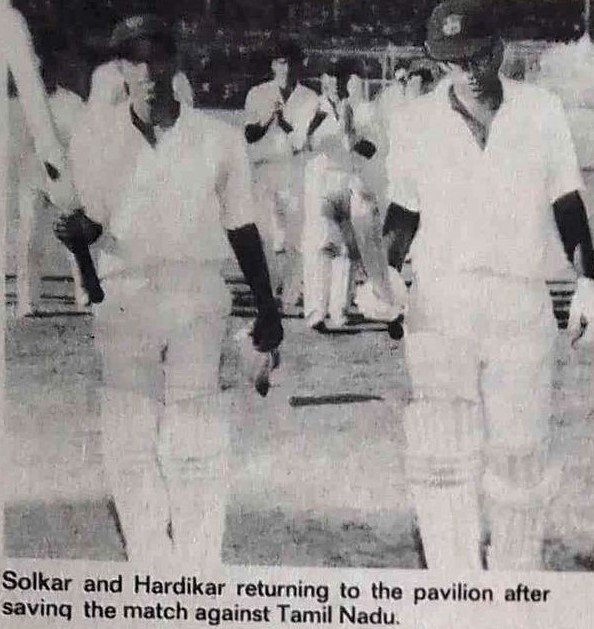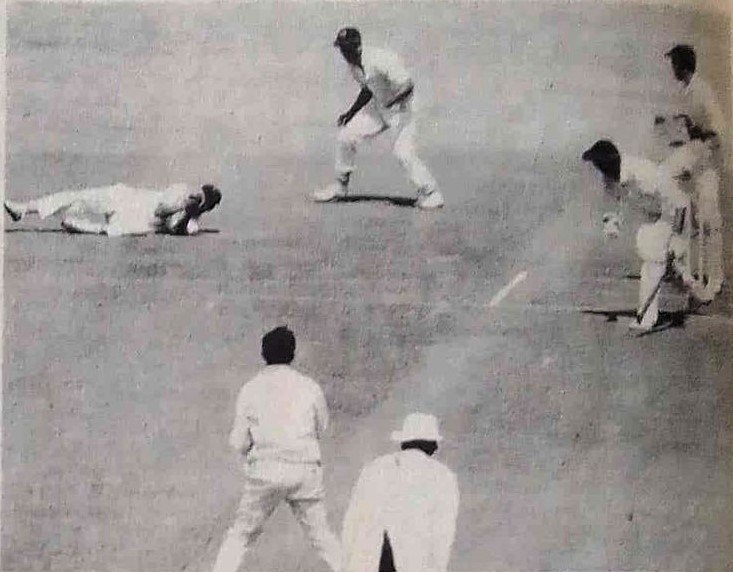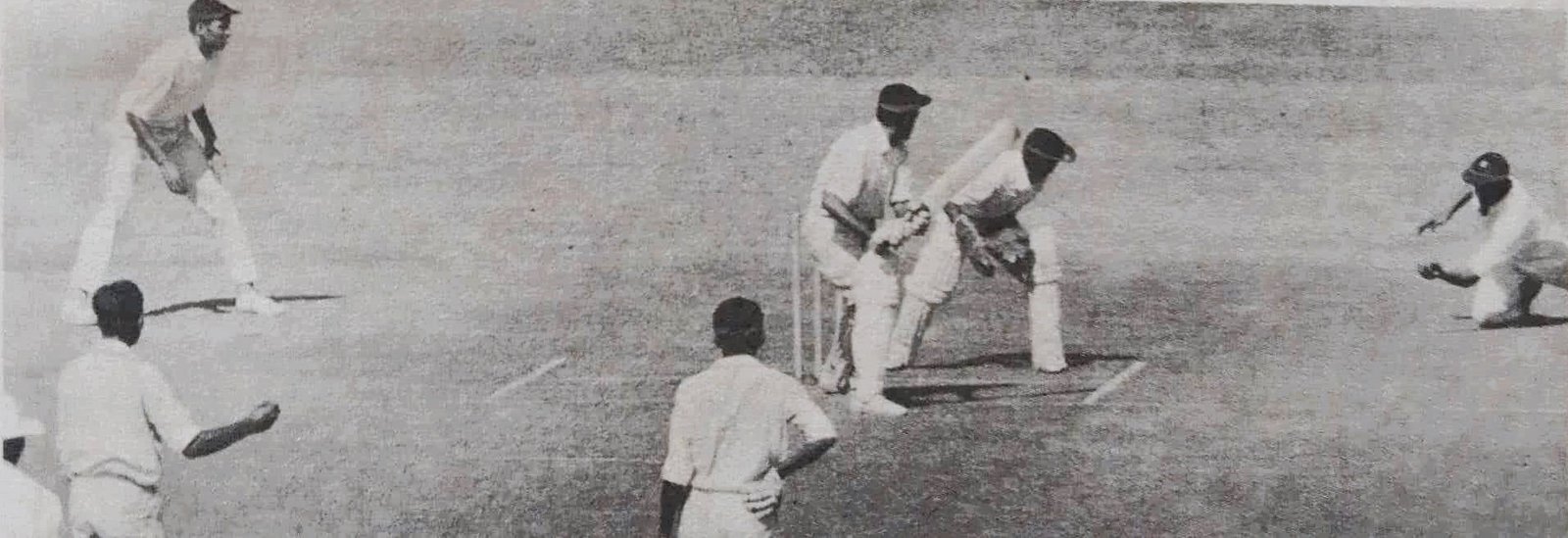Grabbing the half chance and realizing the importance of great catches can change the course of the match. Cherish the vintage thoughts of the a great fielder in Indian cricket.
The Ranji Trophy championship is 50 years old. Being associated with this championship by representing Bombay, I am even more elated because my state has won it for a record 29 times. My performance in the Ranji championships earned me a place in the national team, and some of the catches taken by me in this tournament brought international fame to me. Playing for club, state, zone, and the country.
I have always given my best, and the department of fielding played a significant part in building my cricketing personality. Fielding is as important as any other aspect of cricket. A run saved is a run scored over the opponent. A simple catch sends the batsman back to the pavilion, but a half-chance converted into a catch cuts short a batsman’s tenure at the crease. There is a belief that I am only a specialist close-in fielder. I am a good fielder in the outfield too.

Many ask me which I would consider the best catch in first-class cricket. It would be difficult for me to single out a particular catch because various aspects have to be considered, like the situation of a match, the rival’s hold at a particular period, etc.
Here are some of my best catches in first-class and Test cricket.
In 1968 while playing against Madras in the final of the Ranji Trophy, Najam Hussain was facing Baloo Gupte. This was also the match where Manohar Hardikar and I saved the match for Bombay when the chips were down. Baloo bowled a delivery, and the batsman just went forward to smother the spin. He failed to get on top of the ball and edged. I did not have much chance to make the catch, and it was falling some four yards slightly towards my left.
I decided to dive to my left side at full length with my left hand going underneath the ball. Once I felt the ball in my hand, I clutched it with both hands. Nari’s fall: A year later Bombay was playing Gujarat in a league match. And again a spinner, Atul Mehta, was in action. He bowled a googly, a leg-spinner, to the left-hander Nari Contractor. The batsman saw the ball curling outside the off stump and tried to steer the ball between the ‘keeper and short gully, where I was stationed. The batsman, while going for the placement, got a snick, and the ball was about to fall two yards in front of me.
My main aim was to lessen the pace of the ball, provided my palm met the ball. But my take off went so smoothly from the gully that when I saw the ball in my right hand with the full body weight on it, I was stunned. The ball, instead of taking the direction of the square point, went a little towards the right, providing me the half chance. Incidentally, I had a hand in the dismissal of 16 out of 19 batsmen in this match.
Incredible: In 1979, I recall taking a similar catch of a similar shot, but this time it was well executed and timed. It was a perfect one by the Uttar Pradesh wicketkeeper.
“Incredible,” “spectacular,” and “superb” were some of the adjectives that often went to describe the catches made by Eknath Solkar in first-class cricket and Tests. ‘Ekky’ recollects some of the best made by him.
My right knee went down a yard with the left hand stretching out to take a single-handed catch to end Nari’s innings. Playing for the West Zone against South in the Duleep Trophy in 1968-69, I distinctly remember the stroke ending the innings of Mansur Ali Khan Pataudi.
Pataudi flicked medium pacer Ajit Pai, the stroke aimed towards the square leg region. The ball, however, travelled towards the fine leg. I just heaved myself to the right from the backward short leg and brought off a good catch. The batsman while returning to the pavilion, applauded me. It all happened in a split second.
Akash Lal, the Rest of India opening batsman, made a ferocious square cut towards point in the Irani Trophy against Bombay in 1968-69. I tried to cut short the stroke, which would have surely fetched in the semi-finals.
Noticing that the wicketkeeper-batsman was inclined to go for strokes between third man and point. Skipper Sunil Gavaskar ushered me to a short gully with another man about three yards behind me. Karsan Ghavri delivered one short outside the off-stump, and the batsman was there to cut it. I threw myself to the right; the ball struck my hand and bounced towards my left and front. I quickly got on my feet and cupped the ball. The ball, after bouncing from my hands, was for some seconds in the air, which gave me time enough to take the catch inches from the ground.
Another catch to remember was the one at forward short leg against Saurashtra on a matting wicket in 1981. Yajuvendrasinh glanced Ravi Kulkarni’s inswinger. The ball just stuck in my hands.

And now the tests. The first one was against Bill Lawry’s Australians. It was the test India won at New Delhi. Doug Walters was trying to turn or hit on the on-side. And so when Prasanna bowled a faster one. Walters tried to stroke between mid-on and mid-wicket. All he got was an inside edge towards fine leg, which I took diving to my right.
A pat from Lawry: In the same series at Calcutta, the batsman was Bill Lawry, hemmed in by the close-in “gang,” Ajit. Venkat, Abid, myself, and Farookh, the keeper. Lawry kept on smothering whatever Bedi sent. Finally Bedi’s slightly shorter one brought Bill Lawry’s bat forward and straight. I fell flat and took the catch. The Australian patted me and later presented me with an autographed bat.
In the Madras Test against Australia, I took a catch, which to many would not have been a great catch. To me it was. On a turning wicket, Venkat’s vicious off break was glanced by Keith Stackpole. I was moving to my left when I sensed the chance with the ball in the air. I dived six feet to my right and held the catch. In the Calcutta Test against England (1972), skipper Tony Lewis swept Prasanna. I took evasive action. Then Engineer yelled, “Take it, Ekky.” I moved diving to my left to take the mistimed sweep falling near silly mid-on.
The best: I consider this one as the best catch of my life. It was against the Englishmen led by Tony Lewis in the Calcutta Test. Mike Denness went to make a cover drive off a Prasanna delivery, pitching outside the off stump. All were looking towards the cover fence. I saw the ball taking the inside edge, and with my right hand reached out and plucked it. Moments later the umpires gave the batsman out and were laughing. Why? Denness was surprised too. Well, soon after holding the catch, I put the ball in my trouser pocket.
There were many catches taken by me in England and elsewhere, like the ones taken to dismiss Keith Fletcher and Alan Knott in the 1971 Oval Test, falling full length. I could not believe that the ball had come to me. What one requires to be a close-in fielder is a sharp eye and supple body to bring off good catches. And also a close-in fielder has to read the wickets and adjust himself like I used to do when Chandra was bowling. For his first two overs, he stood two steps behind the normal short leg position because Chandra was really a quick bowler with a mixture of short and good-length deliveries. Once Chandra got his length, I moved two steps forward. Can you guess who the most dangerous batsman I have come across is? It is Roy Fredericks!
